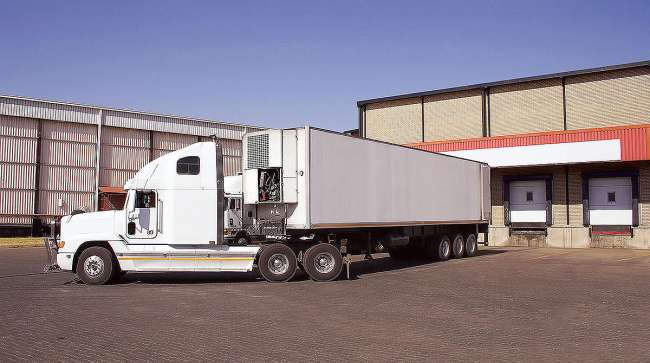Staff Reporter
Spot Market Normalization Signals Uncertain Future

[Stay on top of transportation news: Get TTNews in your inbox.]
The spot market has been declining, but with rates and volumes still above historic norms it’s unclear where it will stabilize.
“It started the year at a record high coming off of a very busy Q4,” Ben Cubitt, senior vice president of consulting at the Uber Freight company Transplace, told Transport Topics. “Then it started a steep and sustained drop, one of the longest sustained drops that we’ve seen in some time.”
Cubitt noted that rates per mile have declined over that time to about $2.36 from $3.50. He also noted that freight volumes are down significantly. But that’s only the spot market, not freight volumes overall.

Cubitt
“We’ve seen a shift from spot to contract,” Cubitt said. “I think it’s a very pronounced shift to contract volume. I think networks have got a little bit more efficient on both the shipper and carrier side. That’s real hard to quantify. And then there’s some seasonal easing.”
Cubitt added spot rates are still very high despite the decline from last year. They are the second highest ever for May, last year being the only comparable period when they were higher. He also noted that spot rates should start leveling out midsummer based on historic norms.
“The economy is still very strong,” Cubitt said. “If it’s still dropping middle of the summer then we got a different situation. But if you had a look at history and you had a look at all the indicators, you would think we would start leveling out and even see a little bit of a bump midsummer. And then the wild card is when all that product from Asia starts flowing back in.”
Cubitt added the second half of the year usually sees a slight or dramatic increase depending on a variety of factors. But because operating costs have increased for carriers, there would be a massive problem if rates continued to fall.
“I think if you look out over the next year, unless we have a really strong recession, then demand will still be pretty strong and rates can only go so far without destroying capacity,” Cubitt said. “You start getting below $1.80 a mile or $1.60 a mile, you’re getting below operating cost. And that’s historical. It’s probably higher now.”

Hutto
Truckstop.com regularly recorded more than a million daily postings on its load board platform throughout last year. The constrained supply chain and capacity issues drove many shippers to the spot market. That has steadily decreased since the first week of January. The load postings were around 900,000 daily during the week of May 8.
“Which is a remarkable difference,” Brent Hutto, chief relationship officer at Truckstop.com, told TT. “But that’s still more than double the normal. So, it’s not like it’s come back to a normal recovered market. We’re still way above normal.”
Truckstop.com data also shows that spot rates for all segments increased 6 cents year-over-year to $3.13 for the week of May 8. This is primarily due to significant increases in fuel costs.
The normal five-year average for rates is about $2.25.
“When you take fuel out of it, you see the decline,” Hutto said. “We’re still above normal, still above the five-year average, but it’s definitely moving really quickly toward that from a rates standpoint.”
Hutto noted it’s unclear what the spot market will look like once it stabilizes. It could be similar to the five-year average before the coronavirus pandemic disrupted supply chains or it could be a new normal. He suspects that will start to become clearer at some point in July.
Want more news? Listen to today's daily briefing above or go here for more info
“Rates are still historically high,” Dean Croke, principal analyst at DAT Solutions, told TT. “The downside is carrier operating costs have probably gone up about 50 cents a mile over the last year. So that’s not helping carriers that are struggling to pay for big fuel bills. But to put rates in context, despite all the doom and gloom, rates are still 42 cents a mile higher than non-pandemic years. So, we’re still seeing lots of demand in the spot market.”
DAT recorded that posts to its load board network fell 15% during the week of May 7-13. The spot rates for dry van excluding fuel during the same time span was $1.96 per mile. That is its lowest point since August 2020. Reefer spot rates decreased 7 cents week-over-week to $2.27 a mile. Flatbed went down 4 cents to $2.60.
“We’re definitely trending back under this time last year,” Croke said. “We were seeing for the most part of last year, double the load posts in the spot market that we would typically see in any month of the year or any week of the year. And that was because more shippers were sending more loads more urgently because capacity was tight.”

